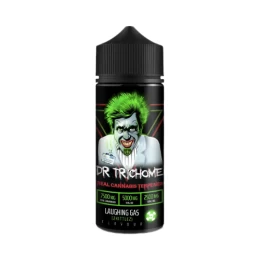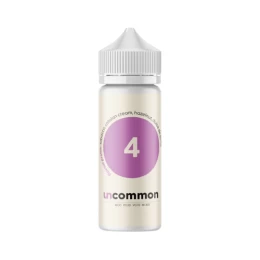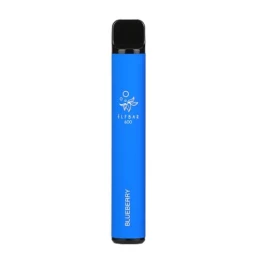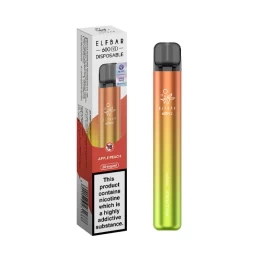How much nicotine is in a vape? It’s a fair question to ask. After all, most vapers are trying to, over time, reduce their nicotine intake. This is particularly the case with recent smokers. Back when I used to work in a brick-and-mortar vape store, one of the most common questions I’d get asked was, “How many packs of cigarettes are in a vape juice bottle?”
There isn’t an exact comparison because everyone’s smoking and vaping habits are individually unique. That being said, I can undoubtedly outline some approximations. Want to know whether you’re on more nicotine now than when you were smoking? Let’s take a look-see!
How Many Mg of Nicotine in a Vape?
Unless you’re entirely new to vaping, you know that different vape juices have different strengths to suit different needs. There’s 20mg juice for your hardened nicotine fiends and 3mg for the breezy social smokers. But how many milligrams does each bottle actually contain?
Different vapers are going to be vaping different vape nicotine levels, often because they’re using various types of e-liquid that satisfy their old smoking habits.
3 FOR £9.99 – MIX & MATCH…
Light smokers tend to enjoy the gentle nicotine strength of sub-ohm high-VG vapes, whereas those with standard habits often enjoy the higher strengths and throat/chest ‘kick’ of freebase e-liquid.
Finally, those getting through close to a pack or more a day usually only find satisfaction from the smoothness of session-friendly high-strength nic salts.
| Smoking Habit | Vape Juice Type | Average Strengths |
| 1-5 cigarettes per day | High-VG | 3mg-6mg |
| 5-15 cigarettes per day | Freebase Nicotine | 10mg-12mg |
| 15-20+ cigarettes per day | Nicotine Salts | 18mg-20mg |
How Many Mg of Nicotine in a Disposable Vape?
3 for £12.95 – DISPOSABLES
2 for £25 – DISPOSABLES
Most of the time, disposable vapes sold in the UK will have a 20mg nicotine strength, which is the UK’s legal limit. You can find 10mg disposables occasionally, but they’re less common. This resulted in 20mg becoming seen as a ‘standard strength’ among those who began vaping with disposables.
In my opinion, this wasn’t a good development in the vaping world. 20mg, after all, is designed to satisfy intense smokers who are on close to 20 cigarettes a day!
Jumping into the deep end of nicotine dependency might have been a poor choice for some, but luckily, refillable vapes make it easy to gradually lower your dosage.
In total, a 20mg disposable vape containing a TPD-compliant 2mls of e-liquid will contain 40mg of nicotine overall. This is because vape juice strength is rated as ‘per 1ml’ in the UK.
Of course, multi-pod disposables and prefilled kits complicate the math. An IVG 2400 Nic Salt Disposable Vape contains 8ml. Let’s work this one out.
- The device is listed at 20mg strength.
- 20mg per 1ml, in a device containing 8ml.
- So, there are 160mg of nicotine in total.
That might sound ludicrously high, but remember, it’s the same as getting through four 2ml disposable vapes, so you aren’t using more nicotine.
Is Nicotine Percentage the Same as Mg in Vaping?
No, the nicotine percentage of a given e-liquid bottle and the nicotine mg are not exactly the same, though they are related!
A vape juice’s nicotine strength is ordinarily measured in mg/ml, meaning milligrams per millilitre.
Nicotine percentage, on the other hand, indicates how much nicotine the e-liquid contains by volume. Remember, while nicotine is often the most vital part of vape juice, it’s the smallest ingredient in the mix!
Most of your e-liquid is made up of VG/PG and flavour concentrates, which the nicotine solution seeps through and dilutes itself across.
Remember, the listed strength on the bottle is ‘per ml’, so if you have a 10ml bottle, multiply the mg by ten to learn the full strength.
| Nicotine Strength (mg/ml) | Nicotine Strength (%) | Total nicotine in a 10ml bottle |
| 3mg | 0.3% | 30mg |
| 6mg | 0.6% | 60mg |
| 10mg | 1.0% | 100mg |
| 12mg | 1.2% | 120mg |
| 20mg | 2.0% | 200mg |
How to Calculate Nicotine in Vapes?
You can use a simple formula to quickly calculate the nicotine contents of an e-liquid you’re looking at.
Nicotine Strength (mg/ml) X E-Liquid Volume (ml) = Total Nicotine (mg)
For example: A 10ml bottle with a listed strength of 18mg. Each 1ml is 18mg. There are 10mls in the bottle. 18 x 10 = 180. Easy, no?
And luckily, even if maths aren’t your strong-suit, the universal sizing and strength limits imposed by the TPD provide us with some hard numbers we can rely on. A bottle of e-liquid with nicotine already in it will always be 10ml, and the strongest it can be is 20mg.
This gets a bit more muddled if you’re producing your own e-liquid and needn’t abide by the same rules as commercial manufacturers, but I would assume the mathematics of nicotine dosage are something you’re paying close attention to in that case.
How to Calculate Nicotine in Vapes?
You can use a simple formula to quickly calculate the nicotine contents of an e-liquid you’re looking at.
Nicotine Strength (mg/ml) x E-Liquid Volume (ml) = Total Nicotine (mg)
For example, a 10ml bottle with a listed strength of 18mg contains 10ml. Each 1ml of which is 18mg. Thus, there are 180 mg in the bottle. 18 x 10 = 180. Easy, no?
Luckily, even if maths isn’t your strong suit, the universal sizing and strength limits imposed by the TPD provide us with some hard numbers we can rely on. A bottle of e-liquid with nicotine already in it will always be 10ml, and the strongest it can be is 20mg.
This gets more muddled if you’re producing your own e-liquid and needn’t abide by the same rules as commercial manufacturers. Still, I assume the mathematics of nicotine dosage are something you’re paying close attention to in that case.
How Many Packs of Cigarettes Are in a Vape?
All this questioning of how to most accurately replicate cigarette nicotine dosage through vaping begs a vital question, doesn’t it? So, how much nicotine is in a cigarette?
The average cigarette — and we’re using tailor-made cigarettes for comparison as hand-rolled has too much variation — contains about 8-12mg of nicotine. However, your body only absorbs about 1-2mg due to the inefficiency of inhaling combusted plant materials.
Let’s break things down with a table, eh?
| Vape Nicotine Contents | Approximate Cigarette Equivalent |
| 20mg/ml (2ml disposable) – 40mg total | ~20 cigarettes |
| 10ml e-liquid (10mg/ml) – 100mg total | ~50 cigarettes |
| 50ml shortfill (1 nic shot, ~3mg/ml) – 150mg total | ~75 cigarettes |
What Is the Best Nicotine Strength for Vaping?
Ultimately, the best nicotine strength is entirely down to your personal preferences. Someone who only pinches their friends’ cigs in the pub garden is going to cough pretty bad on a 20mg freebase juice.
Similarly, a pack-a-day smoker will find a 3mg high-VG vape juice weak and inefficient, likely puffing through the entire bottle only to remain unsatisfied.
When seeking an e-liquid that’s going to replicate the satisfaction you receive from tobacco, consider your intake ON A BAD DAY. No need to be coy; we’re all friends here.
Below, you’ll see a table that should indicate not only the strength of e-liquid you should consider but also the variety of e-liquid most likely to satisfy and not frustrate you.
| Smoking Habit | Cigarettes per day | Recommended Vape Nic Strength | Vape Juice Type |
| Casual | 1-4 | 0mg to 3mg | High-VG |
| Medium | 5-14 | 6mg to 12mg | Freebase |
| Heavy | 15-20 | 18 to 20mg | Nicotine Salts/Bar Salts |
Your Nicotine, Your Vape, Your Choice
I hope the information above has given you a better sense of how much nicotine is in a vape. While it’s certainly a precise science, that doesn’t mean it’s immediately digestible information! But by now, you should feel more comfortable exploring different e-liquid and nicotine options on the MIST online store.








